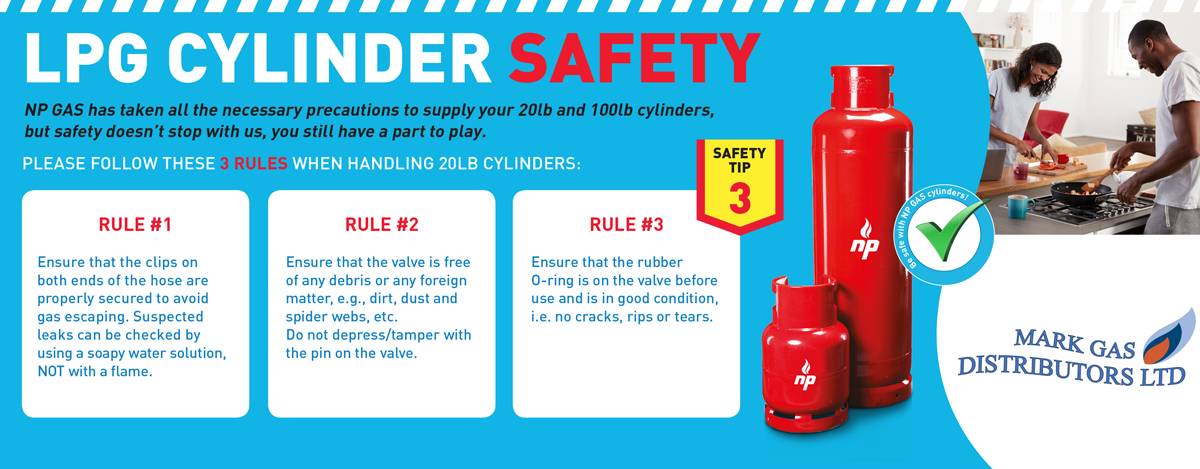






RECOGNIZING SAFE CONDITIONS FOR 100LB LPG CYLINDER INSTALLATIONS
Recommendations for Allowable LPG Capacity on Customer's Premise:
- Maximum allowable number of 100lb LPG cylinders at a:
- Residential premise: 2
-Commercial business premise: 4
- 100lb LPG Installations must be carried out by NP authorized 100lb LPG Installation Contractors ONLY.
- During delivery to customers, if a suspicion arises based on the nature of the installation, do not supply LPG product until further consultation with the LPG Business Unit.
DEALING WITH LEAKING LPG CYLINDERS
100lb LPG Cylinders
- The customer should contact the CustomerServices Department at NP to inform of his/her leaking LPG cylinder.
- No attempt should be made by the customer who has not been trained, to make any repairs.
- The cylinder must be marked as faulty.
- The distributor responsible for supplying the customer with 100lb cylinders is contacted and will make subsequent arrangements to acquire the leaking cylinder and replace accordingly.
- This cylinder will be returned to NP's Filling Plant for further inspection.
dipiscing elit. Ut elit tellus, luctus nec ullamcorper mattis, pulvinar dapibus leo.
DEALING WITH LEAKING LPG CYLINDERS
20lb LPG Cylinders
If the cylinder is leaking without the gas igniting, if it is safe to do so, the following actions should be taken:
-The appliance in operation (stove) must be immediately turned off.
-All nearby sources of ignition should be removed.
-The cylinder valve should be closed and any plug or cap securely replaced.
-If the leak cannot be stopped, the cylinder should be:
- Removed to a well-ventilated open space which is well away from sources of ignition, drains, buildings and other LPG cylinders
- Marked as faulty
- Left with the leak uppermost
- Isolated from general access (for example by barriers)
DEALING WITH LEAKING LPG CYLINDERS
General Guidelines
Cylinders should be inspected regularly for leakage. Never attempt to find a leak by means of a naked flame. Leakage can be detected in any of the following ways:
- By sense of smell
- By sound of escaping gas
- By condensation or frosting round the leak
Leaks may be confirmed by brushing soapy water over the suspected leak source. Signs of bubbles will be observed from the location of the leak.

